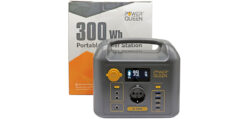
Installation …
After the setup and all the details, we now come to the Powerstation installation. First of all, it is best to charge the Power Queen battery. The Powerstation battery is usually pre-charged to just over 70%. Incidentally, there is no Power Queen app for setting the charging speed or the maximum charge level.
Connect and charge the plug-in power supply unit …
To charge the battery for the first time, connect it to the socket using the mains adapter supplied or use the lower DC5521 connection marked Input. The power station then switches on automatically and shows the current charge status on the display. The LED on the power supply unit lights up red to indicate that the battery is not yet fully charged. The display switches off after a few seconds and can be reactivated at any time by briefly pressing the power button.
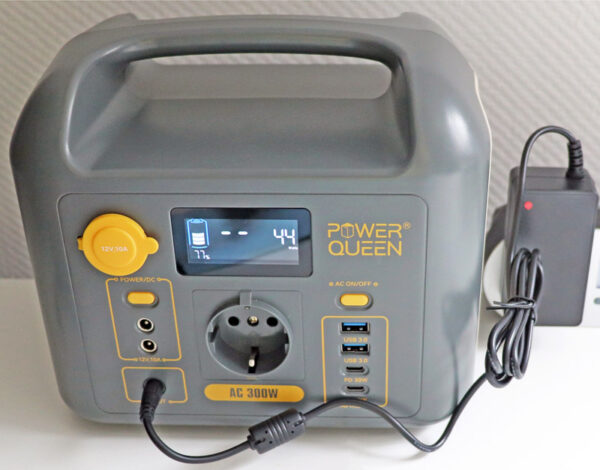
As soon as the charging process is complete, the LED on the power supply unit lights up green and the power station switches off completely after a certain time.
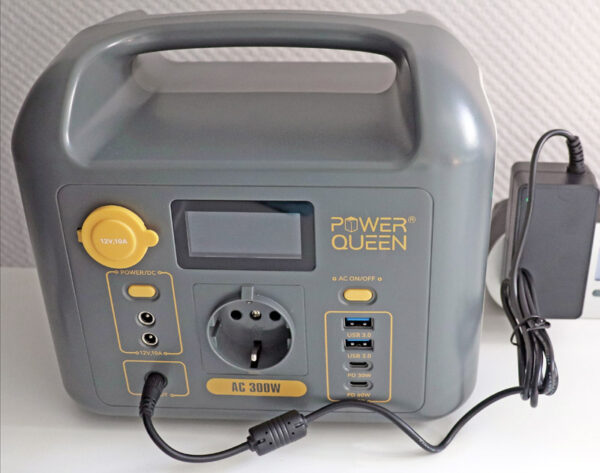
Charge with solar panel …
If you want to use a solar panel or have ordered one, you can connect and charge it using the DC5521 to MC4 cable supplied. According to Power Queen, the maximum input power at the DC5521 plug is 10.8-23.7V at 3A and therefore theoretically 71.1W, although the maximum input power according to the data sheet is only 60W in total. According to the manual, the total output of the solar modules may be up to 100 watts, but the open-circuit voltage of the solar modules must never exceed 23.7V, as this could destroy the integrated charge controller! Therefore, only connect a solar panel with 10.8-23.7V under 100 watts to the Power Queen P300W Powerstation.
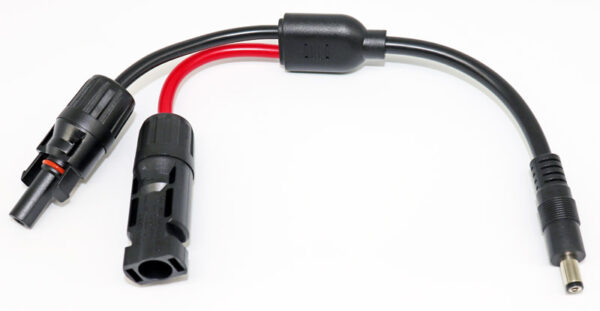
Attention: Anyone thinking about connecting a balcony power station with its own micro inverter to the front socket, for example, should immediately discard this idea! This is because the 230V AC output must never be used as an AC input! The construction with a balcony power station on the power station could only work as long as the power consumption of the connected devices continuously exceeds the yield of the solar panels or the inverter and therefore no current is supplied via the front AC output. As soon as this current consumption is even briefly below this level, current would be fed into the output and thus inevitably destroy the power station! So don’t do it under any circumstances!
Charging with motor vehicle …
If you want to charge the Powerstation via your motorhome or car instead, the corresponding cable for DC5521 to 12V car socket is also included in the scope of delivery.
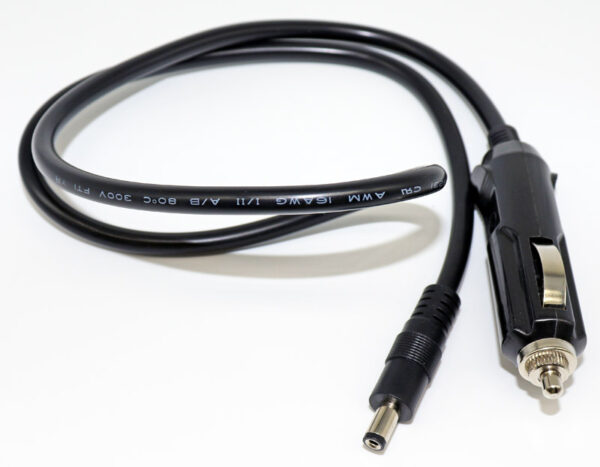
Charging with USB-C …
A USB-C cable is not included in the scope of delivery, but you could also charge the battery of the Power Queen Powerstation by plugging a suitable USB-C cable into the 60W USB-C PD input at the bottom right. USB PD stands for USB Power Delivery and this means that you can currently charge with up to 100 watts via this connection, whereby Power Queen offers a 30 watt and a 60 watt USB-C connection.
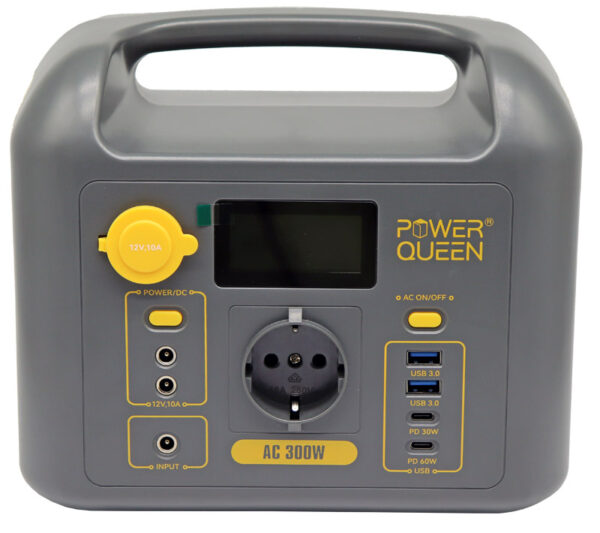
This brings us to the practical testing.
We continue with the Power Queen P300W Powerstation Practical testing …
